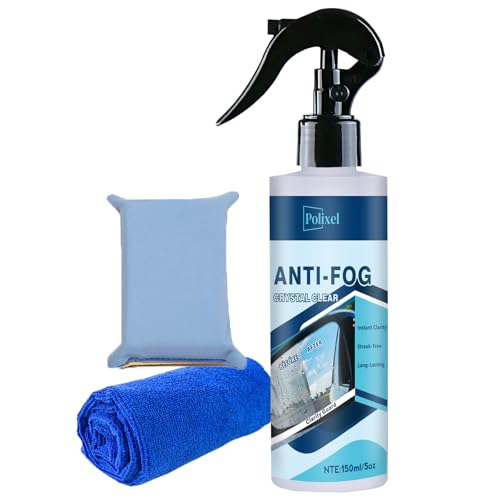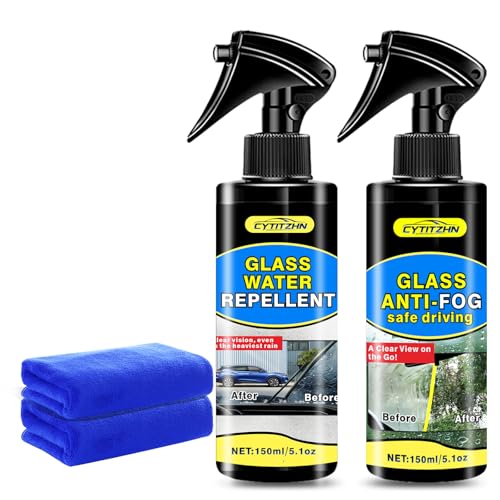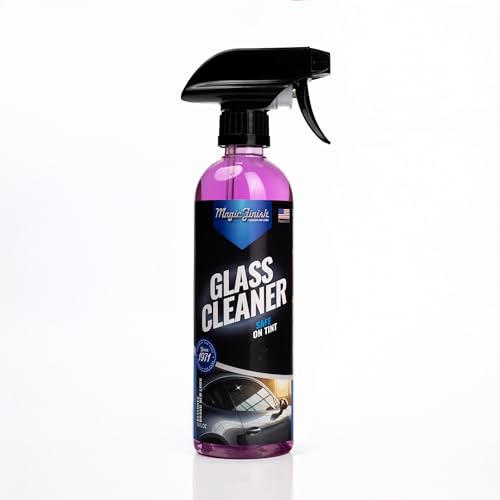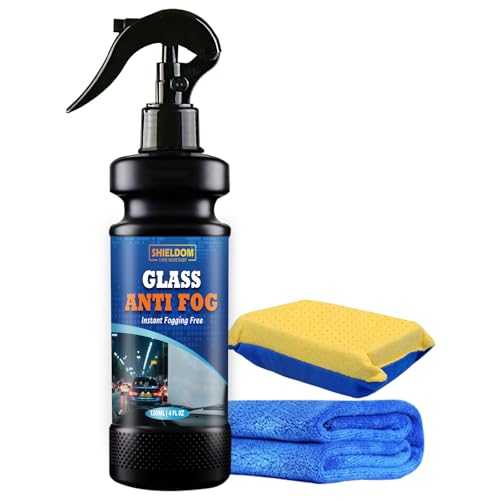Staring through a blurry, fogged-up windshield is more than just an annoyance—it’s a serious safety hazard that can obstruct your view at the worst possible moment. If you’re tired of constantly wiping away condensation and fighting for visibility, you’ve come to the right place. This guide will solve the frustrating mystery of why your windows fog up and provide clear, actionable methods to stop it for good.
To stop car windows from fogging up, you must manage the two root causes: the temperature difference between your car’s interior and the outside air, and the level of excess moisture inside your cabin. The fastest solution is to use your car’s climate control system effectively.
Leveraging extensive analysis of established automotive principles and data, this guide unpacks five proven approaches, from mastering your car’s built-in systems to simple home remedies. We’ll break down the science in an easy-to-understand way, offering critical insights that will help you achieve and maintain crystal-clear windows, no matter the weather.
Key Facts
- Primary Cause: The main reason for window fog is condensation, which occurs when warm, moist air inside your car makes contact with the cooler surface of the glass.
- The Dirt Factor: A dirty or grimy interior windshield provides more surface area for moisture droplets to cling to, significantly worsening the fogging effect compared to a clean window.
- AC is a Dehumidifier: Your car’s air conditioning system is one of the most powerful tools for defogging because it actively removes moisture from the air, even when you have the heat turned on.
- Fresh Air is Crucial: Using the “recirculate” air function traps humid air inside your car. Switching to the “fresh air” setting is critical, especially in winter, as it brings in drier outside air to reduce cabin humidity.
- Passive Moisture Absorption Works: Simple moisture absorbers, such as silica gel packets or a sock filled with kitty litter, are highly effective at passively pulling excess humidity from your car’s interior, preventing fog before it starts.
Why Your Car Windows Fog Up: Understanding the Science
Your windows fog because warm, moist air inside your car hits the cold glass, causing the water vapor to turn into tiny liquid droplets (condensation). This simple principle of physics is the root cause of that frustrating, vision-blocking film. Think of it like a cold drink ‘sweating’ on a hot day. Your car window is doing the exact same thing. To effectively how to stop car windows from fogging up, you need to tackle the two main ingredients in this recipe for poor visibility:
- The Temperature Differential: This is the most common trigger. When the glass is significantly colder than the air inside your car (typical on a cool or cold day), condensation forms rapidly on the interior of the windows.
- Excess Moisture: The air inside your car is often more humid than you think. This excess moisture comes from several sources, including the breath of passengers, wet umbrellas or jackets, damp floor mats, or even a coffee left in the cupholder. The more moisture in the air, the faster and thicker the fog will be.
Understanding these two factors is the key, because every effective solution involves either reducing the moisture inside your car or balancing the temperature between the glass and the interior air.
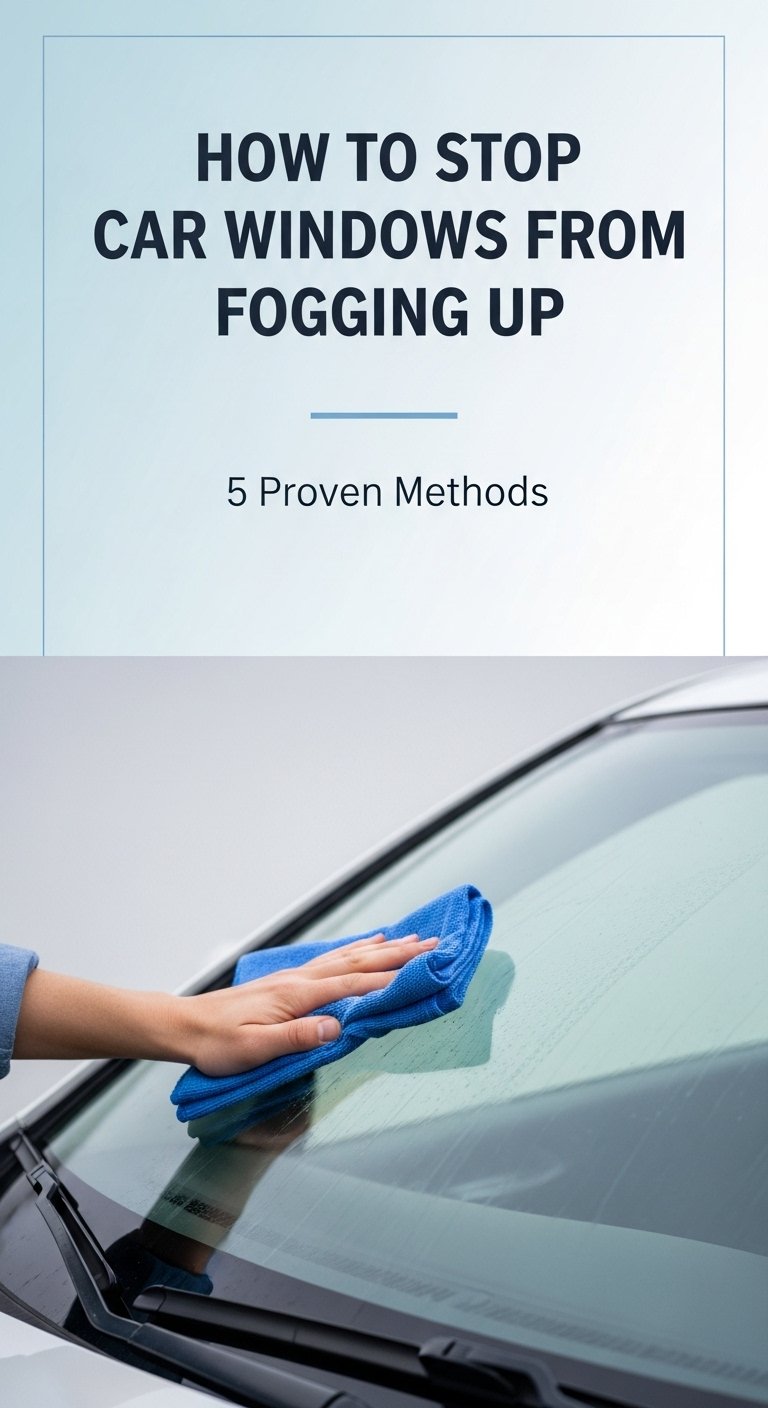
1. Master Your Climate Control System for Instant Defogging
The most effective method is to turn on your defroster, engage the Air Conditioning (AC) to remove moisture, and gradually increase the heat to balance the temperature. Your car’s climate control system is your first and best line of defense against foggy windows. Using it correctly can clear up your view in a matter of seconds. Ever wondered what that ‘recirculate’ button really does for fog? Here’s the secret to using your system like a pro.
Pro Tip: Many modern cars are designed to automatically engage the A/C compressor when you select the front defroster setting, even if the A/C light doesn’t turn on and the heat is cranked up. This is because the system knows that dry air is the key to defogging quickly.
How to Use Defroster, AC, and Heat Together
It might seem counterintuitive to run the air conditioning and the heat at the same time, but this combination creates the perfect fog-fighting weapon: warm, dry air. As highlighted by automotive experts, many modern vehicles automate this process for maximum efficiency.
- Engage the Defroster: Press the front defroster button. This will direct a powerful stream of air directly onto the inside of your windshield.
- Turn on the A/C: Press the A/C button. The A/C’s primary role here is not to cool the air, but to act as a dehumidifier, pulling moisture out of the air before it’s blown onto the glass.
- Turn Up the Heat: Gradually increase the temperature. Warm air can hold more moisture, and it helps evaporate the existing condensation on the glass much faster than cold air.
Fresh Air vs. Recirculation: A Critical Choice
The choice between fresh and recirculated air is one of the most critical but misunderstood aspects of how to stop car windows from fogging up. Recirculating the air simply keeps trapping the moisture from your breath and any damp items inside the car, making the problem worse. According to principles from the Society of Automotive Engineers (SAE), using the fresh air intake is fundamental for managing cabin climate.
| Setting | Best For Fog? | Why It Works |
|---|---|---|
| Fresh Air Intake | YES | Pulls in drier, cooler air from outside, reducing the overall humidity level inside the cabin and helping to clear fog. |
| Recirculation | NO | Traps and recirculates the warm, moist air already inside the car, which is the primary cause of condensation in the first place. |
Always use the fresh air setting in winter to bring in less humid outside air and reduce interior moisture.
2. Keep Windows Spotless to Prevent Moisture Buildup
Clean the inside of your car windows regularly with a microfiber cloth, as dirt and grime give moisture a surface to cling to, worsening fog. Quick Fact: The hazy film on your inner windshield isn’t just ugly—it’s a magnet for fog-causing moisture. This film, created by off-gassing from your car’s interior plastics and dust, creates a rough surface that makes it incredibly easy for water vapor to condense and form fog.
Keeping your interior glass pristine is a foundational maintenance task recommended by automotive experts for better visibility and safety. A clean, smooth surface gives condensation nothing to grab onto.
- Use a dedicated automotive glass cleaner.
- Spray the cleaner onto a microfiber cloth, not directly onto the glass, to prevent overspray on your dashboard.
- Wipe the glass thoroughly with one side of the cloth.
- Flip the cloth to a dry side and buff the window until it is completely clear and streak-free.
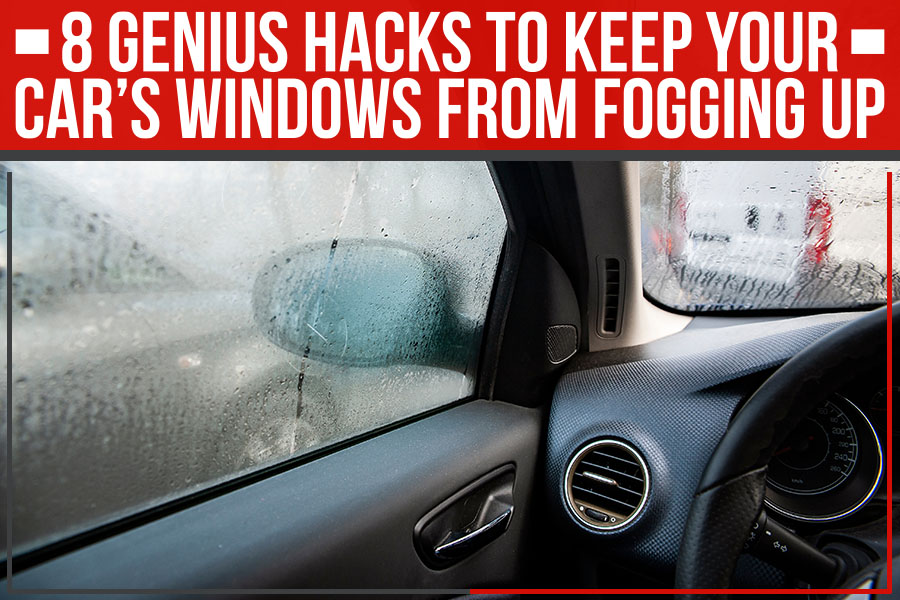
3. Apply Anti-Fog Treatments (Commercial & DIY)
Apply a commercial anti-fog solution or a homemade remedy like a water/vinegar mix or shaving cream to create a barrier that prevents moisture from condensing on the glass. If you’re looking for a more proactive solution, applying an anti-fog treatment can make a huge difference. These solutions work by creating a super-thin, invisible layer on your glass that is hydrophobic, meaning it repels water and prevents the tiny droplets from forming. While commercial products are often more effective and longer-lasting, several DIY options work surprisingly well in a pinch. Ready to try a classic car hack? The shaving cream method might surprise you.
Commercial Anti-Fog Products
For a long-lasting solution, use a dedicated anti-fog spray, film, or professionally applied hydrophobic coating. These products are specifically engineered to combat condensation and are readily available at most auto parts stores.
- Anti-Fog Sprays: The most common solution. Simply spray onto a clean window and wipe away for weeks of fog-free visibility.
- Anti-Fog Films: A more permanent option, this is a clear film that you apply to the inside of your windows, similar to a screen protector for a phone.
- Hydrophobic Coatings: These are professional-grade treatments that create a durable, water-repellent surface on the glass.
Proven Home Remedies
A thin layer of shaving cream wiped clean or a spray of 1:1 water and vinegar can act as a temporary anti-fog coating. These well-known hacks use common household items to create a temporary barrier against condensation.
- Shaving Cream: Apply a small dab of standard foam shaving cream to the inside of your windows. Spread it evenly across the glass with your fingers or a cloth. Then, using a clean, dry section of a microfiber cloth, buff it off completely until the window is clear. The soap residue leaves an invisible film that stops fog.
- Vinegar & Water Mix: Create a solution with a 1:1 ratio of white vinegar and water in a spray bottle. Lightly spritz the inside of your windows and wipe clean with a dry cloth.
- Isopropyl Alcohol & Water Mix: Similar to the vinegar mix, a 1:1 ratio of isopropyl (rubbing) alcohol and water can also be used to clean and leave a temporary anti-fog film.
4. Actively Reduce Moisture Inside Your Car
Prevent fog by reducing interior moisture: remove wet items like umbrellas, use moisture absorbers like silica gel or a sock filled with kitty litter, and check for leaks in seals. The less moisture you have inside your car, the less potential there is for fog to form. This preventative approach tackles the problem at its source. Pro Tip: That silica gel packet from your new shoes? Don’t throw it out! Toss it on your dashboard to help absorb cabin moisture.
- Remove Wet Items: Don’t leave wet coats, umbrellas, boots, or towels in your car. The water evaporates and saturates the cabin air.
- Check Floor Mats: In rainy or snowy weather, your floor mats can become saturated. Take them out to dry overnight whenever possible.
- Use Moisture Absorbers: Place products designed to absorb humidity inside your car. Silica gel packets are great for this.
- Check for Leaks: Persistent, heavy condensation can be a sign of a leak. Check the rubber seals around your doors and windows for any damage or gaps that could be letting moisture in.
One of the most popular and effective DIY dehumidifiers is a sock filled with crystal-style kitty litter. The silica crystals in the litter are extremely absorbent. Simply fill a sock, tie it off, and place it on your dashboard or under a seat.

5. Use Quick Fixes for On-the-Go Fog
For a quick fix, briefly crack a window to equalize the temperature and air pressure, or wipe the condensation away with a clean, dry microfiber cloth. Sometimes fog appears suddenly while you’re driving, and you need to restore visibility immediately. These are temporary measures to use for safety while you get your climate control system working on a more permanent solution.
- Crack a Window: Opening a window even a tiny bit allows the humid interior air to escape and be replaced by drier outside air, quickly equalizing the temperature and clearing the fog.
- Wipe it Down: Keep a dedicated, clean, and dry microfiber cloth in your glove box or door pocket. A quick wipe can clear your view instantly. Avoid using your hands, as the oils on your skin will smear the glass and make future fogging worse.
For those looking to proactively equip their vehicle, investing in a quality anti-fog spray and a car dehumidifier can make winter driving significantly safer and more convenient.
FAQs About how to stop car windows from fogging up
Do you use hot or cold air to defog windows?
Use both. Start with the AC on to remove moisture (dry the air), then introduce heat to warm the glass and evaporate the fog faster. Cold air, when conditioned by the A/C, is very dry and excellent at removing humidity. Warm air is better at evaporating the condensation that has already formed. The combination of dry air from the A/C and warm air from the heater is the most effective strategy.
Why is my windshield fogging up on the outside?
This happens on hot, humid days when your cold AC makes the windshield colder than the outside air. Use your wipers to clear it and slightly increase the AC temperature. It’s the reverse of winter fogging. The warm, moist outdoor air hits your cold windshield glass and condenses on the exterior. A quick swipe of your windshield wipers will clear it instantly.
How do I stop my car windows from fogging up in winter?
In winter, use the defroster with the AC on, ensure the fresh air vent is open, and keep the interior dry by knocking snow off boots and removing wet items. This forms a complete “Winter Fog-Fighting Checklist.” The biggest culprits in winter are the extreme temperature difference and the moisture you track in on boots and clothing. Being vigilant about keeping your car’s interior dry is key.
Why are my car windows fogging up inside when parked?
This is caused by excess moisture trapped in the car (from wet floor mats, clothes, or leaky door seals) condensing on windows as the temperature drops overnight. If you notice your windows are already fogged up before you even start the car, it’s a clear sign you have a humidity problem inside the vehicle. Use moisture absorbers and check your door and window seals for any potential leaks.
Final Summary: Key Steps for Fog-Free Driving
Knowing how to stop car windows from fogging up is a critical skill for any driver, enhancing both safety and convenience. By understanding that the core issues are temperature differences and interior moisture, you can take control of the situation. Mastering your car’s climate control is the fastest solution, but preventative measures like keeping windows clean and the cabin dry will stop the problem before it even starts.
Here are the most critical takeaways for maintaining a clear view:
- Always use your defroster with the Air Conditioning (A/C) on to blow dry air onto the glass.
- Switch your ventilation system to the fresh air intake setting, not recirculation.
- Keep the inside of your windows spotlessly clean with a microfiber cloth.
- Proactively reduce moisture in your car by removing wet items and using a dehumidifier like silica gel or a kitty litter sock.
Take control of your visibility this season—try these proven methods and drive safer and more confidently.
Last update on 2025-11-26 / Affiliate links / Images from Amazon Product Advertising API
